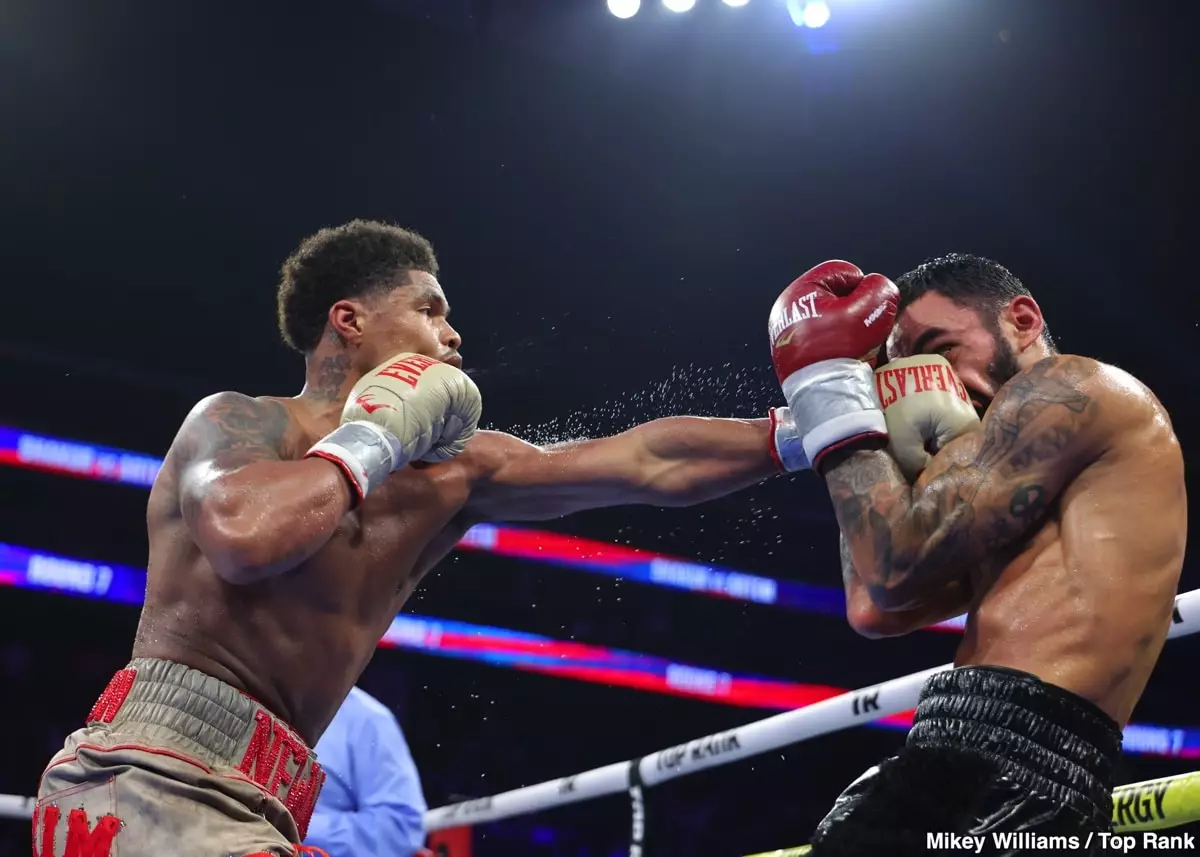As the boxing world gears up for Shakur Stevenson’s title defense against emerging contender Floyd Schofield on February 22 in Riyadh, fans are buzzing with anticipation. Stevenson has made bold claims that his revamped fighting style will surpass the already-impressive approach that has defined his career thus far. But can a fighter truly reinvent themselves, especially when they are nearing the age of 28? Traditionally, athletes often solidify their techniques and strategies in their late twenties, grappling with the idea of change can be daunting. However, the stakes are higher than ever for Stevenson, and the pressure to evolve cannot be overstated.
Stevenson, holding an undefeated record and the WBC lightweight championship title, has faced criticism for his boxing style, which some fans and pundits have deemed overly cautious. His previous performances left fans longing for excitement, especially when booed by the audience during his fights against known punchers like Edwin De Los Santos and Jeremiah Nakathilia. Facing an explosive fighter like Schofield could either reaffirm or challenge Stevenson’s resolve to engage more actively in the ring. While he proudly asserts that his strategy of ‘hit-and-not-get-hit’ is effective, it becomes essential for him to adapt to survive and thrive in the spotlight.
Stevenson’s claim of standing firm against lesser-known punchers raises eyebrows—particularly as he cites his ability to trade punches without fear as a sign of progress. The skepticism surrounding his courage is not unfounded; the scrutiny he faces is part of the job. Taking on Schofield presents an escalated risk, as the young contender is recognized for his formidable power. Should Stevenson choose to remain passive or defensive, he risks disappointing not only his fans but also the influential promoters like Turki Alalshikh. With high-profile fights often leading to the winner maintaining their billing in future events, Stevenson must capitalize on this opportunity.
In today’s fast-paced and often merciless sporting environment, fighters are celebrated for their charisma and willingness to engage. Stevenson must recognize that while technical skills are vital, he needs to develop an engaging persona both inside and outside the ring. Unlike Tyson Fury—who has effectively captivated audiences with his outlandish behavior and entertaining antics—Stevenson’s straight-laced approach may soon feel lackluster if he does not engage with fans on a deeper level. The boxing community thrives on personality and narrative, making it crucial for fighters to resonate with the audience beyond just the action of the fight.
As the upcoming bout approaches, Stevenson stands at a crossroads—one path leading to potential greatness by adopting a formidable and engaging style, and the other toward stagnation and disappointment. His resolve to be a “new version” of himself must translate into action within the ring. With the boxing world watching closely, Stevenson has a unique opportunity to transform both his reputation and legacy. Fans are poised for a thrilling encounter, and it’s time for Stevenson to deliver a performance that validates his claims of evolution. How he adapts in this pivotal moment will define not only his upcoming fight but also the trajectory of his entire career.

